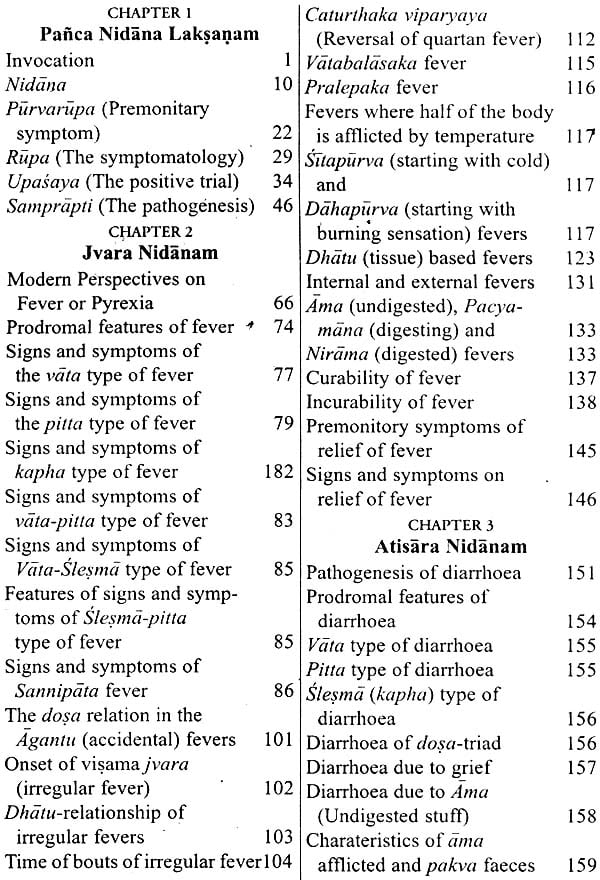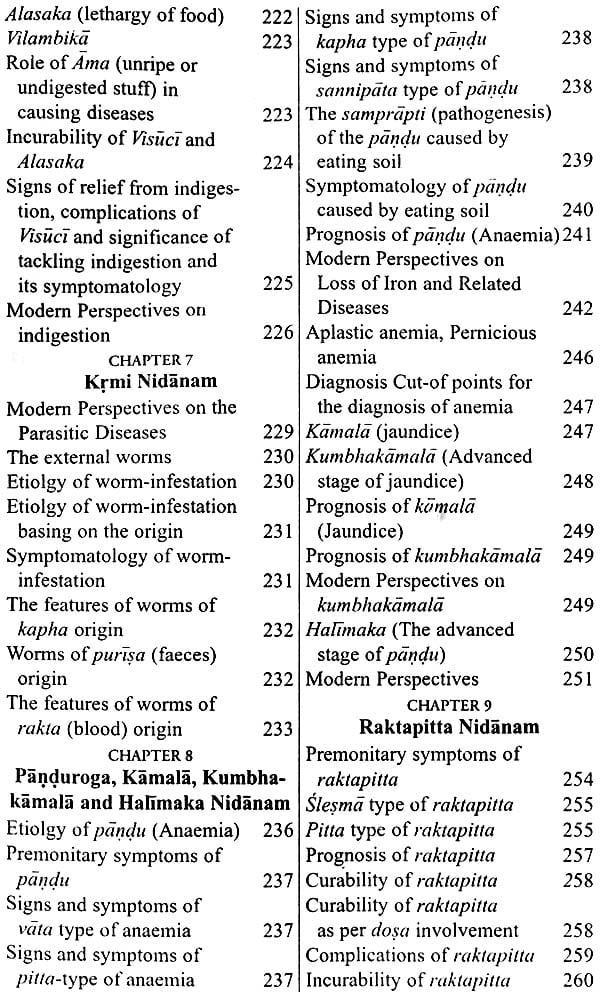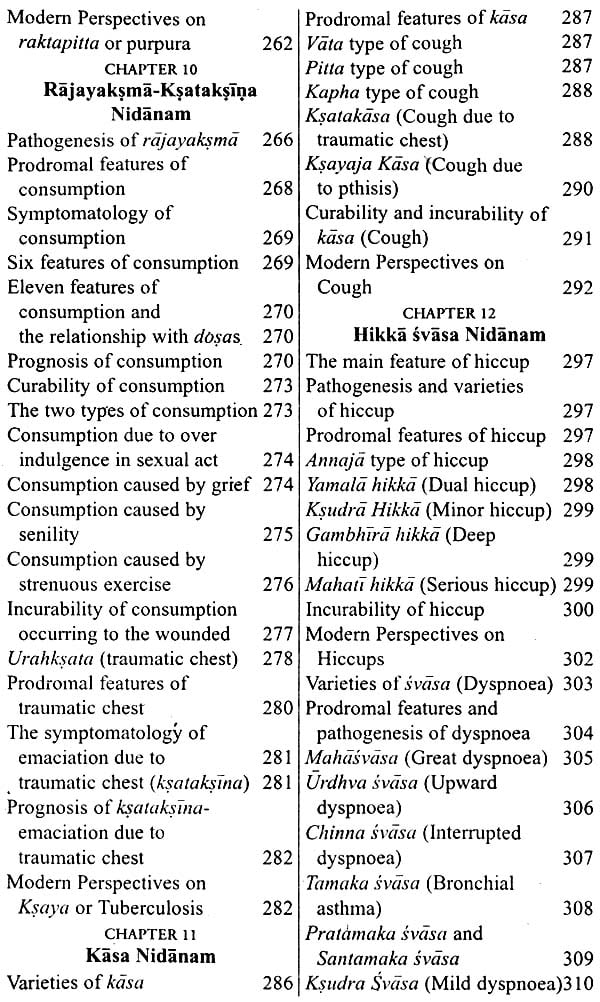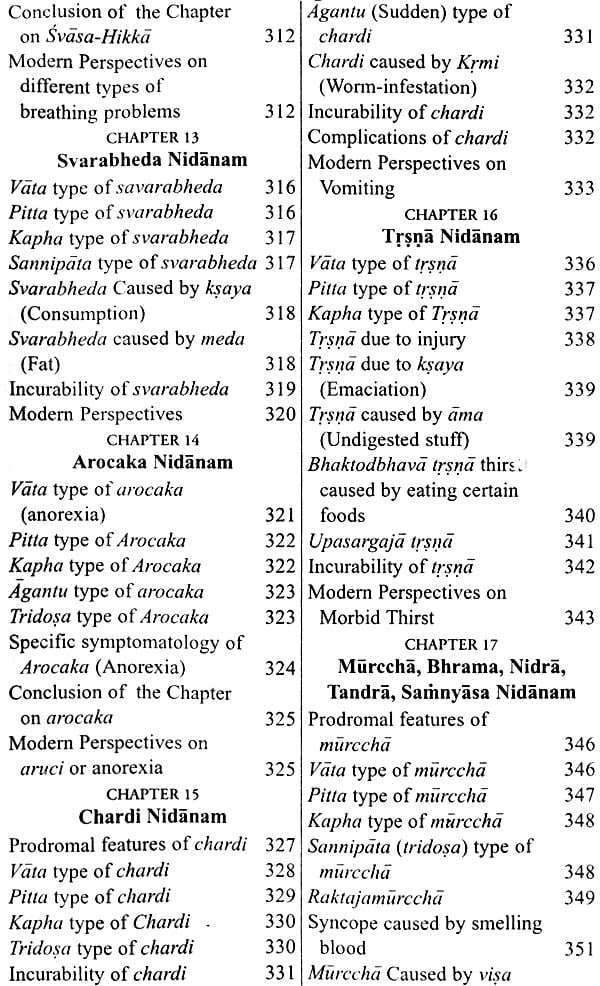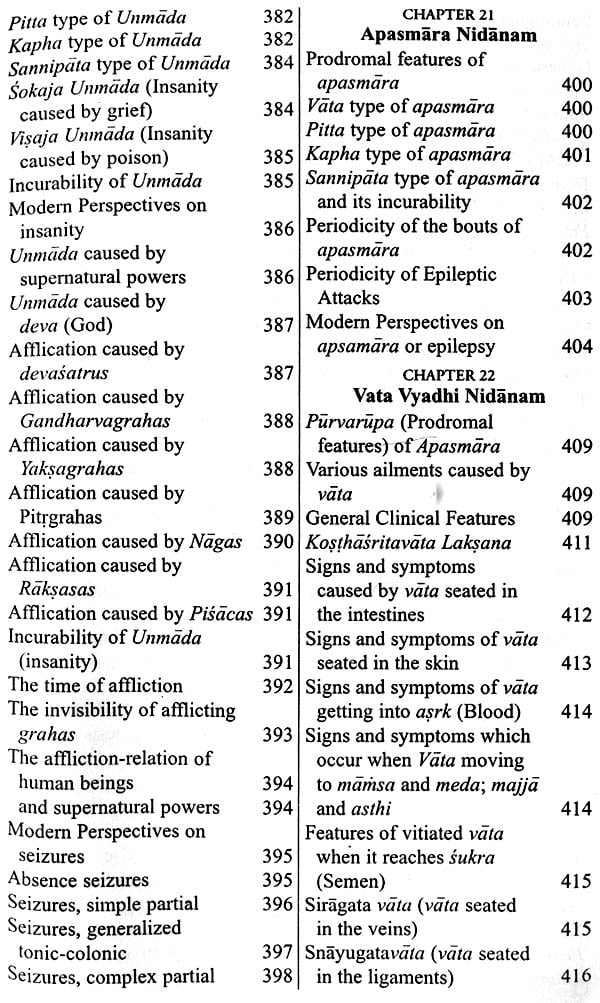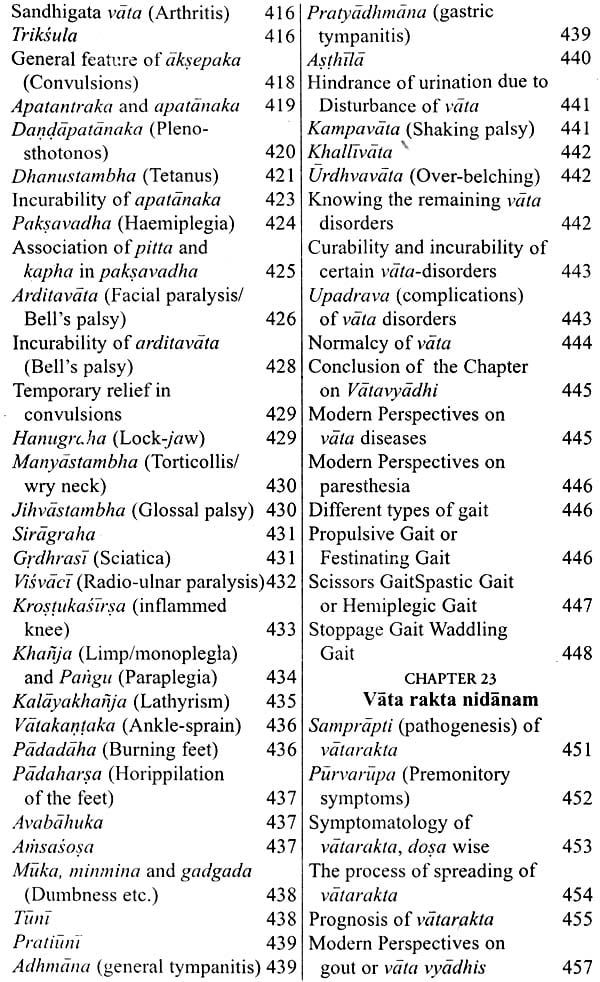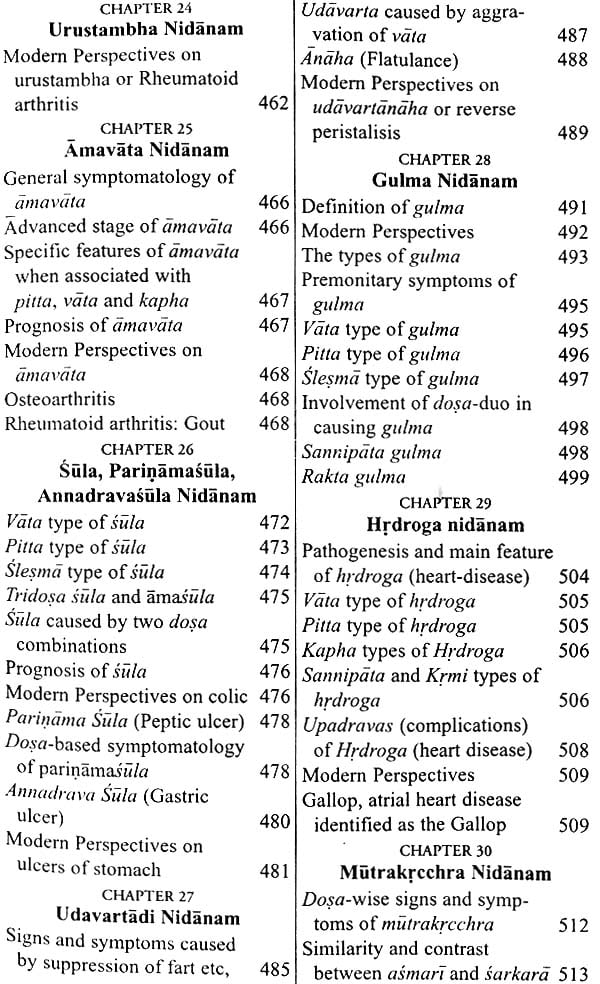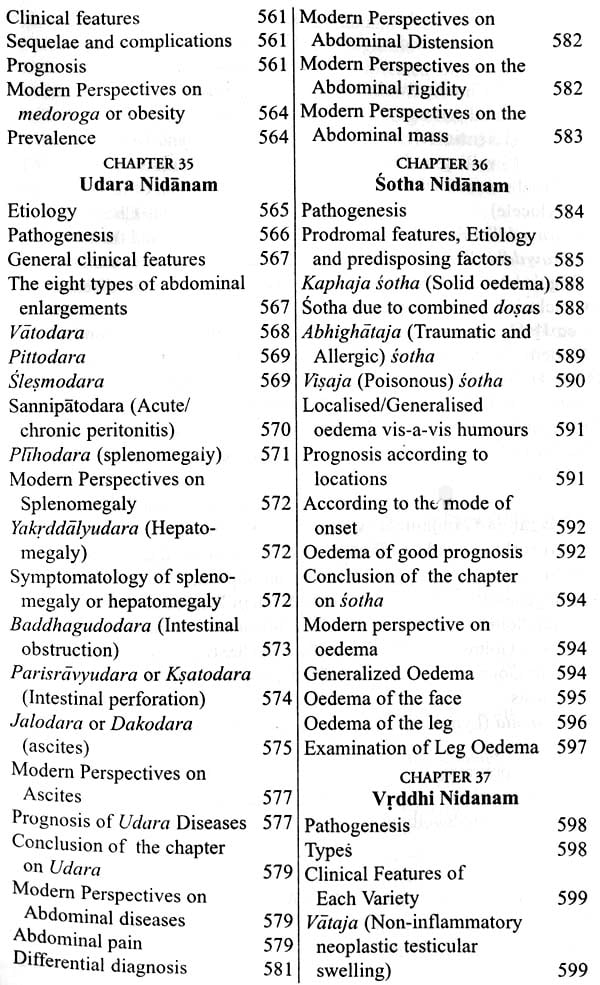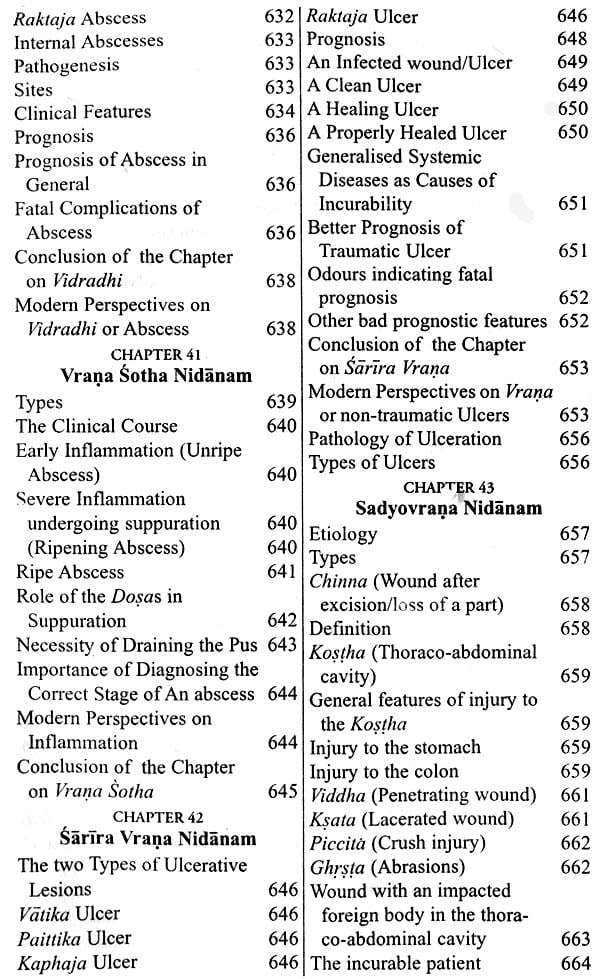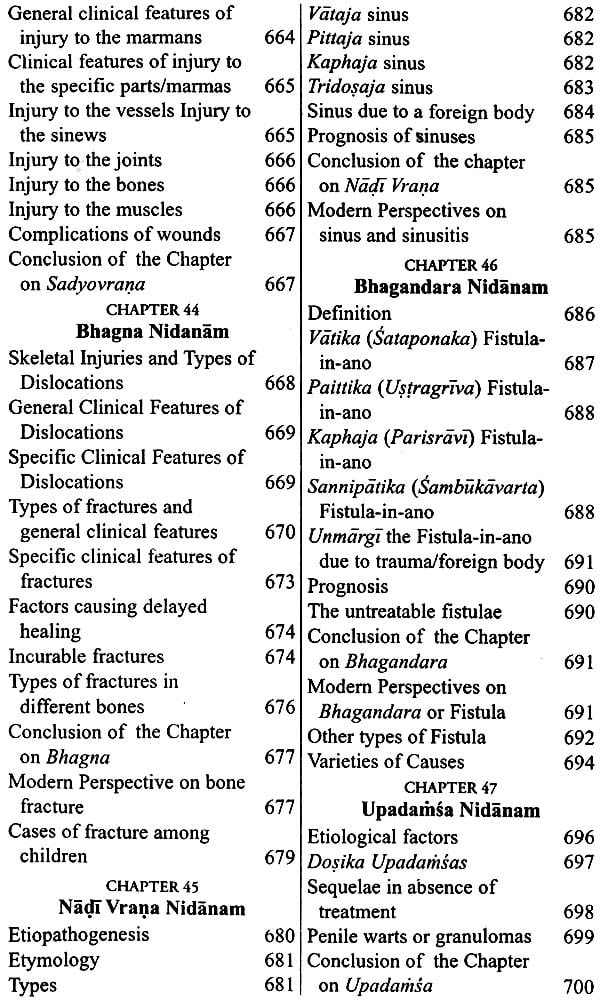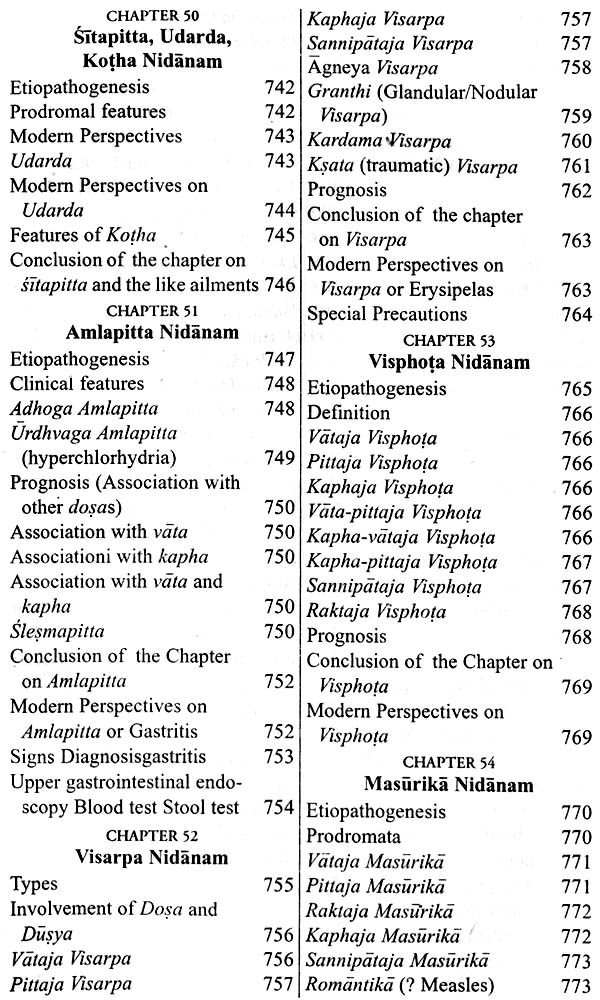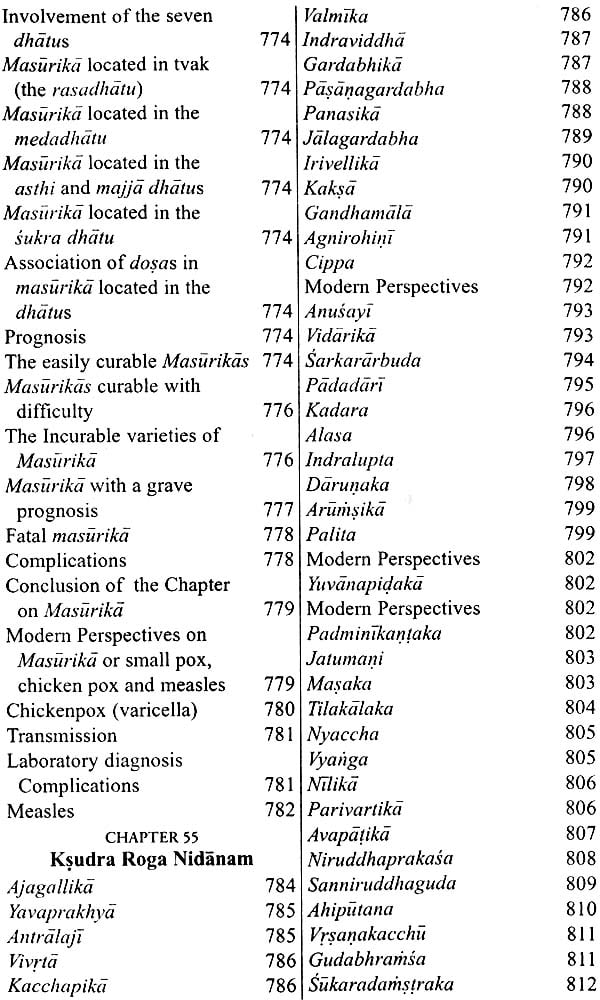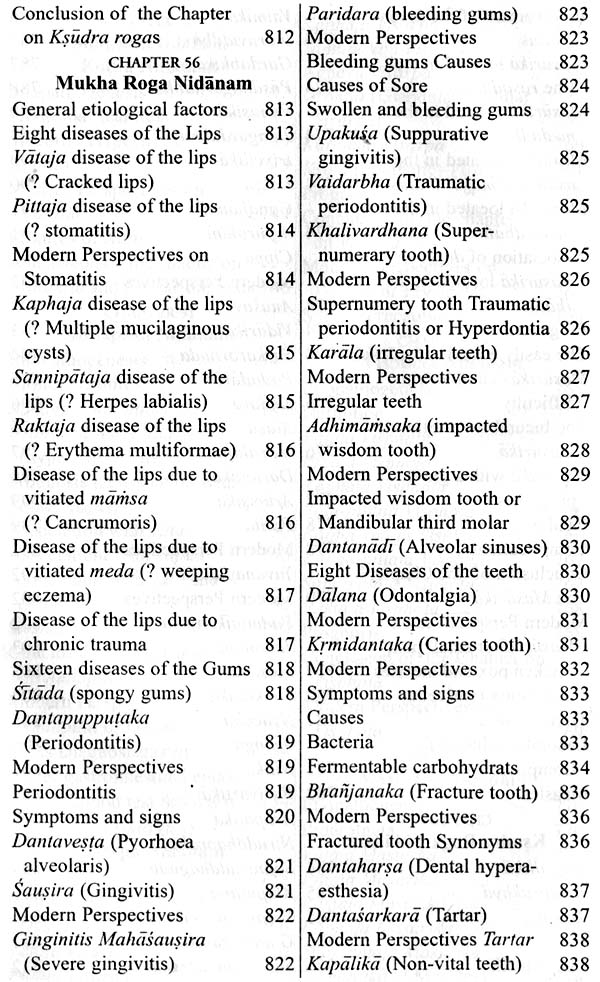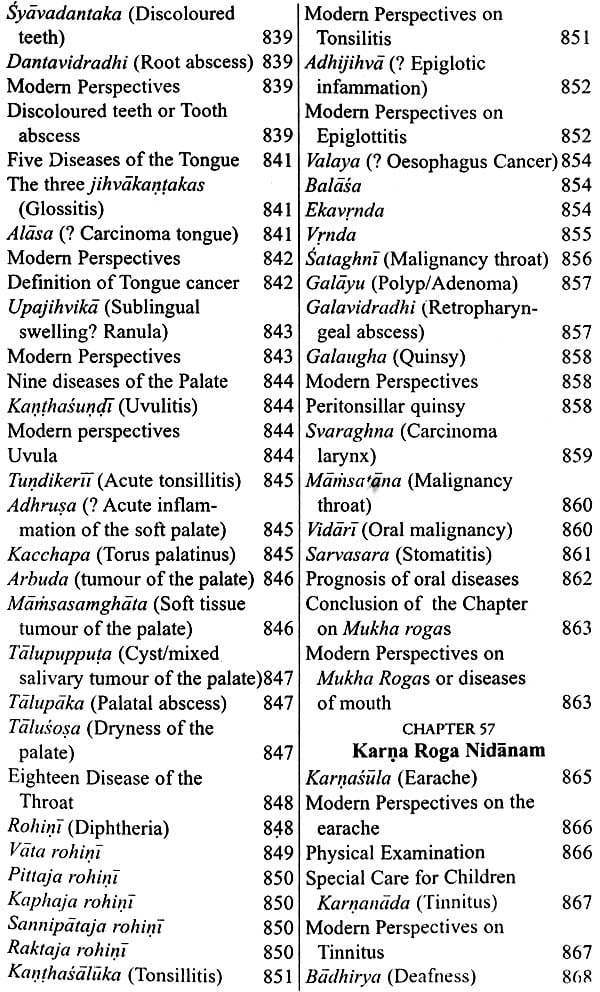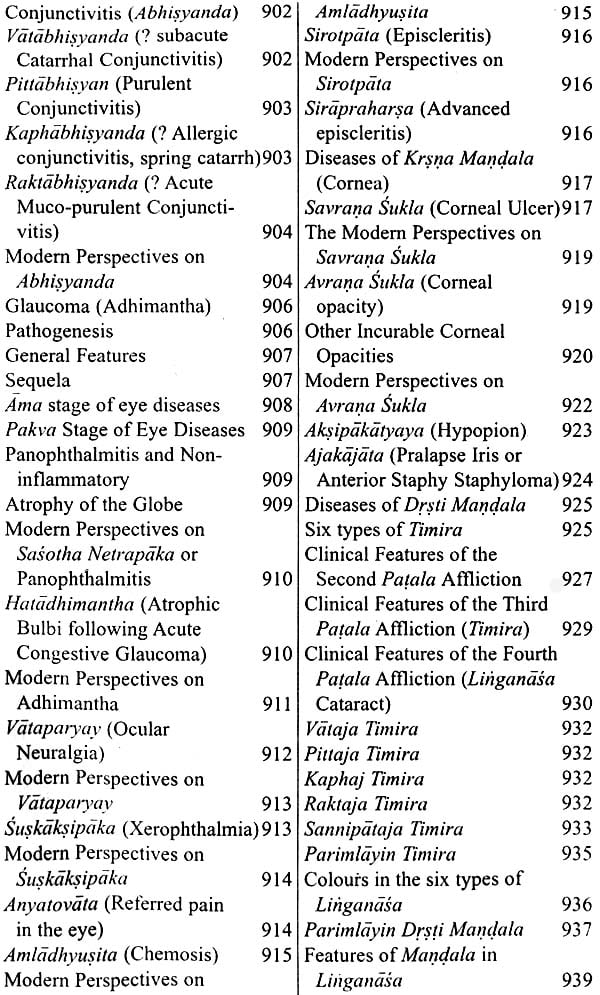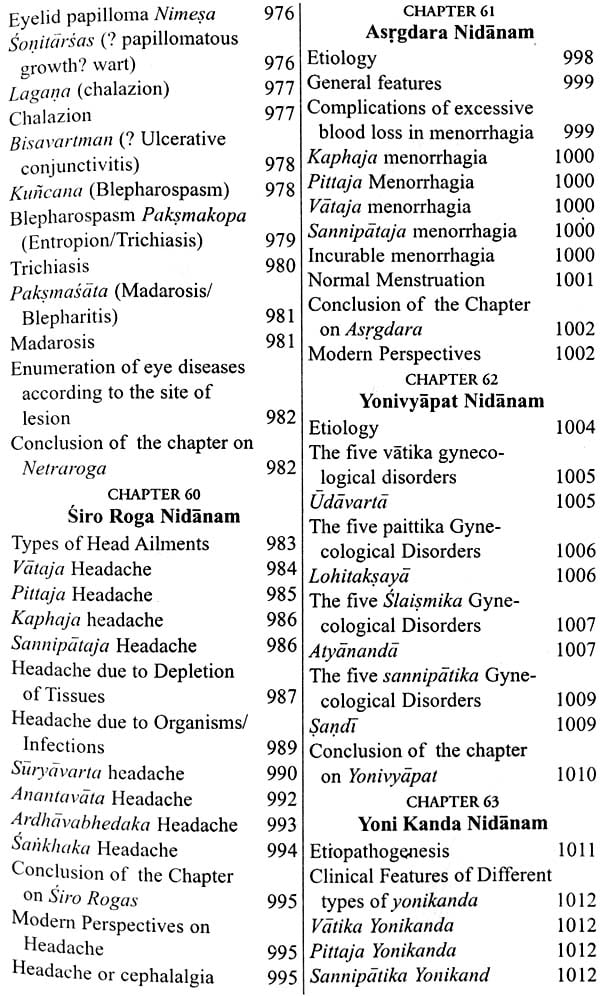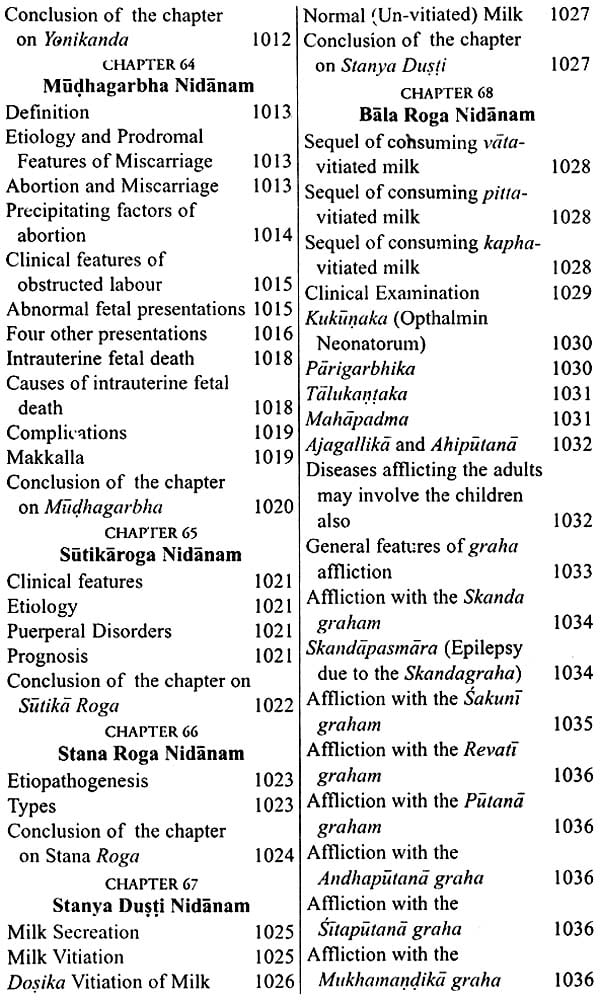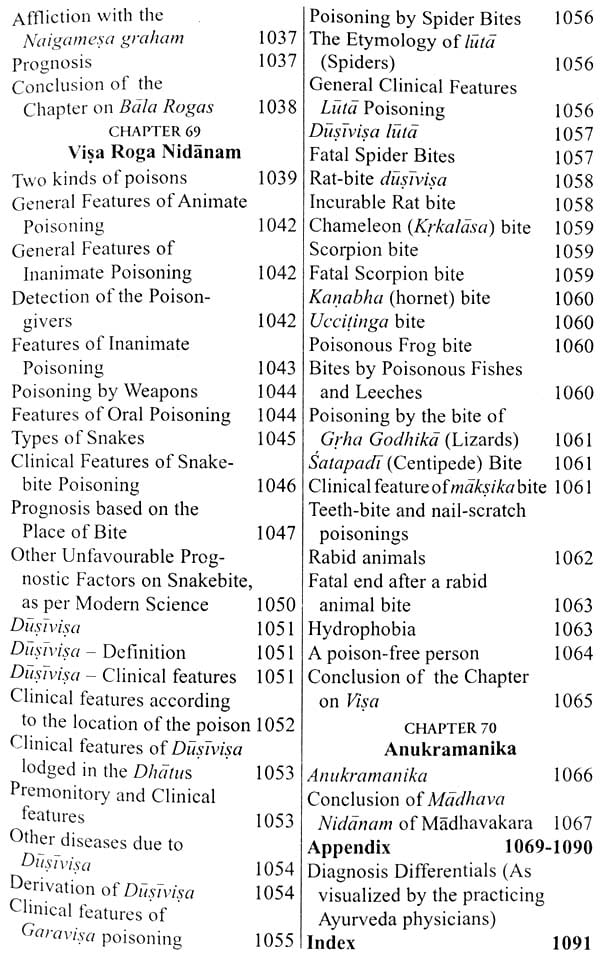
Ayurvedic Diagnostics - Madhava-Nidana of Madhavakara With the Commentary Madhukosa (Set of Two Volumes)
Book Specification
| Item Code: | NAH490 |
| Author: | Dr. Kanjiv Lochan |
| Publisher: | Chaukhamba Surbharati Prakashan |
| Edition: | 2014 |
| ISBN: | 9789383721115 |
| Pages: | 1195 |
| Cover: | HARDCOVER |
| Other Details | 9.0 inch x 6.0 inch |
| Weight | 1.80 kg |
Book Description
Diagnosis forms the most significant part of medicine. The development of the science of diagnosis through successive stages of history makes not only an interesting read but it also equips one with the experiences, successes and the learning achieved by countless generations in the yore and helps one to address problems of the future in an organized way.
The pre-modern diagnostics as prevalent and propounded by seers like Caraka and Susruta and countless other scholars was precisely put together by the Madhava Nidana authored by Madhavakara somewhere in 9th century AD. The work seems to have immediately caught the attention of physicians in India and abroad who found it the most serviceable text on diagnostics. Small wonder, many scholars produced commentaries on Madhava Nidana across the country. These commentaries detailed the ideas contained in the work and on occasions, even advanced, and repudiated the assumptions of Madhavakara as well as that of great seers of the yore. A reading into the various commentaries on Madhava Nidana demonstrates the background of Argumentative Indian Prof Amartya Sen has been talking about recently. It also demonstrates the old Indian spirit of tolerance and the practice of lending a patient ear to the diverse and contradictory views. Nonetheless, it is only a truism that decline of Ayurveda mostly owed to its poor standards of diagnostics. Therefore, it is significant that an authentic text on Ayurvedic diagnosis along with is Commentary is brought to the access of English knowing readers. In preparing the present work, it was a matter of satisfaction for us as we attempted to add modern perspectives every here and there in the text.
It is hoped that through the present work, the students of Ayurveda, the practicing physicians, and those interested in Indian History could have a better understanding of pre-modern Indian society as well as its medicine.
Kanjiv Lochan obtained Ph. D on History of Ayurveda and related medicines from the Center of Historical Studies, Jawaharlal Nehru University, New Delhi. He has been awarded a Visiting Scholar Status from Department of History and Philosophy of Science, University of Cambridge, UK and been a Visiting Associate Prof. of History of Science with the Mahidol University,
Bangkok, Thailand. Presently he is teaching history under Ranchi University, Ranchi, Jharkhand. He lives at a rural town Lohardaga, of this state.
Diagnosis forms the most significant part of medicine. The development of the science of diagnosis through successive stages of history makes not only an interesting read but it also equips one with the experiences and successes and the learning achieved by countless number of generations in the yore. It no doubt helps one to address problems of the future in an organized way. The string of a bow, if stretched deep, helps the arrow measure a long distance without doubt. Likewise, as experts and knowledgeable opine, proper discovery and analysis of the past help us to plan for a longer future and in a better perspective.
Ayurveda regards the state of not being well as unpleasant or misery (duhkha) i.e., disease. The diseases are classified into three major categories: adhibhautika, adhidaivika and adhyatmika. Although the disease-state is predominantly a condition of imbalance of the so called dosas, dhatus and malas, in final presentation it is notably influenced by the seat (adhisthdna) of their vitiation.
The Ayurvedic diagnosis in principle is a qualitative diagnosis, not in terms of the name of a specific disease, but it is an elaborately descriptive procedure to determine the nature of the disease and its aetio-pathogenesis. As the objective of the diagnosis is complex, the methodology too has to be complex coveting the comprehensive aetio-pathological dimensions in a patient.
In order to materialize this, Ayurveda sought a dual approach of what may be called the rogi-roga pariksa. Ayurveda is the only system of medicine in the world that has conceived the idea of identifying the patient-and the disease together. An Ayurvedic physician does not examine his patient only as a diseased entity but it also assesses an •individual with all his or her attributes including his or her constitution, temperament, and life-style. A physician explores the person in the patient and the health in his or her diseased state.
The important component of the entire diagnostic exercise is to judge and estimate the remaining health (avasista svasthya) of a patient. It is for this purpose that Caraka describes the tenfold dimension (dasa-vidha pariksa). A patient has to be examined. to be evaluate ten aspects of (dasavidha pariksa) namely: (1) his constitution (prakrti) including his mental and psychophysical aspects, (2) disease susceptibility (vikrti) (3) quality of tissues (sara); (4) compactness of body (samphanana) (5) body measures or anthropometry (pramana); (6) suitability or adaptability (satmya) (7) mental strength (sattva); (8) digestive power (ahara sakti); (9) exercise - the capacity to endure (vyayama sakti) and (10) the rate of ageing (vaikarana).
Apart from this, the chronological progression (kriyakala) of the disease is also to be analyzed too, as learning this helps a proper management of the disease. The fundamental philosophy behind the concept of kriyakala is to advocate an early diagnosis and appropriate intervention in order to reverse the disease process at the earliest. The six kriyakalas, according to Susruta, are: (i) Sancaya- accumulation of dosas; (ii) Prakopa - vitiation or aggravation of dosas; (iii) Prasara or spread of vitiated dosas; (iv) Sthana samsraya - localization of vitiated dosas at defective sites; (v) Vyakti - manifestation of the disease; and (vi) Bheda - further advancement and complications.
Ayurveda describes detailed methods of case history and. clinical examination with certain specific approaches. It lays special stress on intimate doctor-patient relationship or high quality rapport in order to achieve the necessary understanding of a patient and his ailments. A successful physician has to be not only well trained and knowledgeable but also adequately wise, intelligent, transparently sincere too, and in close rapport with his patient. Caraka stresses that 'unless a physician succeeds in entering the innermost area (antaratma) of his patient in the light of the lamp of his (the physician's) knowledge and wisdom, he cannot treat him' (CS, VS. 4.19).
Ayurveda identifies the fundamental importance of examining a patient by application of direct perception (pratyksa) and inference (anumana). In addition, however, it accepts verbal or textual knowledge as testimony (aptopadesa), the orally transmitted tradition, or a record of observational experience of Ayurvedic experts in diagnosis in the same way as a student of modern medicine accepts the textual as well as his educator's exposition. Pratyaksa, anumana and aptopadesa are collectively named the trividha pramana or trividha pariksa (three methods of diagnostic knowledge or examination).
According to Caraka, the fourth but an important supplementary diagnostic approach, is yukti. A physician should try to obtain information of a disease through experimentation or planned investigations to either confirm or negate his perceptions of the causative factors of disease based on the first three methods. As for the examination or diagnosis of a disease in a patient, eight chosen points (astavidha pariksa) form the general examination: pulse, urine stool, tongue, voice and speech, skin, eyes and the face, followed by the examination of a patients head and neck, chest, abdomen, and limbs.
Throughout the pre-modern ages and across the globe, the medicine of lndia remained the best tradition of the world. This assumption is reinforced through stances of attempts to duplicate Indian medical traditions or part of that in ancient Greece and China. Nonetheless, the medical science in Europe was revolutionized in the 19th century and later by advances in chemistry and laboratory techniques and equipment, old ideas of infectious disease epidemiology were replaced with bacteriology. Much in medicine that is now taken for granted was undreamed of even as recently as 40 years ago. Progress in diagnosis, in preventive medicine and in treatment, both medical and surgical, has been rapid and breathtaking. Presently smallpox has been eradicated, poliomyelitis practically banished, tuberculosis has become curable and coronary artery disease surgically relievable.
